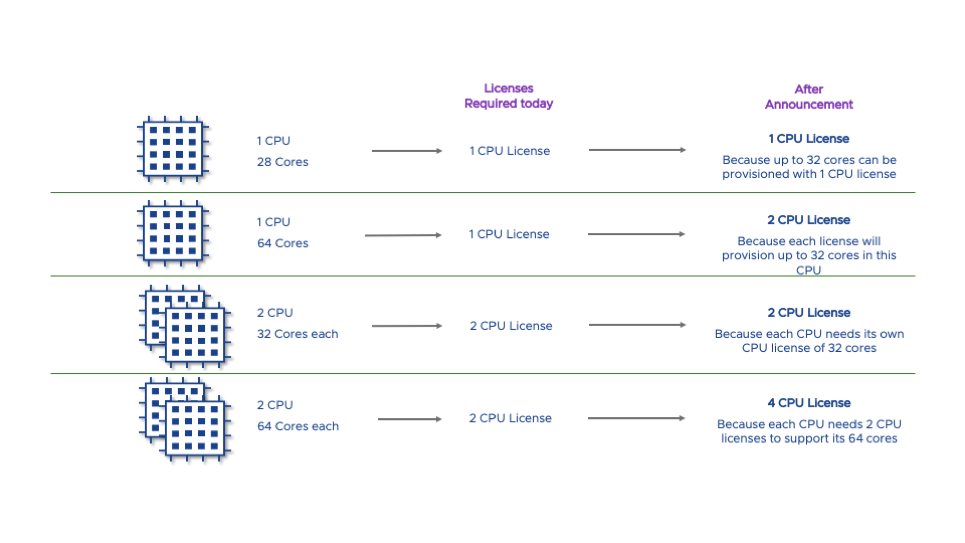Inacurate
Gawd
- Joined
- Aug 25, 2004
- Messages
- 520
Yesterday, VMware announced future updates (begins April 2nd, 2020...why not just choose April Fool's!?) to their pricing model to align with ever increasing core counts on CPUs. Thanks AMD! 
https://www.vmware.com/company/news/updates/cpu-pricing-model-update-feb-2020.html
The biggest impact is, eventually, going to hit the pockets of those customers whose per-CPU core count is above 32 - based on the 'industry standard' on what defines a CPU.

However, if you act now and pay a separate S&H fee...
VMware is trying to maintain licensing around the CPU, while also charging their users more for having additional cores.
Feels inherently wrong IMO, but I am looking at this as an outsider, so maybe it's acceptable and just how it works?
Anyone able to provide insight as to why they don't change to a per core model only?
https://www.vmware.com/company/news/updates/cpu-pricing-model-update-feb-2020.html
The biggest impact is, eventually, going to hit the pockets of those customers whose per-CPU core count is above 32 - based on the 'industry standard' on what defines a CPU.

However, if you act now and pay a separate S&H fee...
For the few customers who are currently deploying our software on CPUs with more than 32 cores, or for those that are in the process of purchasing physical servers with more than 32 cores per CPU, we are providing a grace period after the licensing metric change goes into effect on April 2, 2020
VMware is trying to maintain licensing around the CPU, while also charging their users more for having additional cores.
Feels inherently wrong IMO, but I am looking at this as an outsider, so maybe it's acceptable and just how it works?
Anyone able to provide insight as to why they don't change to a per core model only?
![[H]ard|Forum](/styles/hardforum/xenforo/logo_dark.png)

